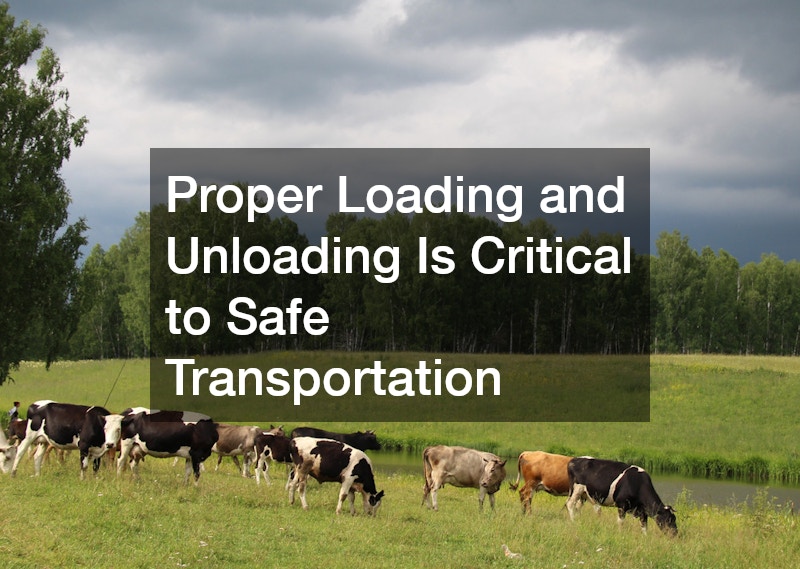In the world of transporting livestock and goods, stock combo trailers from trailer manufacturer offer a versatile solution. However, safely loading and unloading these trailers requires careful attention to detail. This article will guide you through the best practices to ensure your cargo is secure and arrives safely at its destination.
What are the essential steps for preparing a stock combo trailer for loading?
Inspecting the Trailer
Before loading, it’s crucial to inspect the trailer for any damage or maintenance issues that could compromise safety or performance. Checking for structural integrity, such as welding seams and hinges, will help prevent accidents and ensure a smooth journey.
Additionally, verifying the functionality of lights, brakes, and hitch connections is necessary for a legal and safe transport experience. Regular inspection schedules can mitigate risks and enhance the lifespan of your trailer.
Conducting a thorough pre-trip inspection can reveal potential hazards, such as sharp edges or broken panels, that might harm the livestock. Ensuring these areas are secured or repaired before loading can make all the difference in preventing injuries.
Organizing and Cleaning
Proper organization and cleanliness help ensure the safe transport of goods and reduce the risk of cross-contamination between different types of stock. Routine cleaning protocols eliminate bacteria buildup, promoting the health and welfare of the animals.
Identifying and separating cargo types by partitions can prevent accidental mixing and maintain order within the trailer. Implementing labeled sections or barriers aids in efficient loading and unloading, saving time and reducing stress on handlers and animals alike.
Cleaning the trailer after each use is critical to maintaining hygiene standards and preventing the spread of disease. Different livestock operations can follow specific sanitation best practices to adhere to local regulations and ensure maximum safety.
How do you ensure safe loading techniques for livestock?
Using Appropriate Loading Ramps
Selecting the right loading ramps is important for preventing injuries and ensuring that livestock can enter the trailer in a calm and controlled manner. Ramps with non-slip surfaces and appropriate incline angles contribute to safer loading experiences.
Adjustable ramps allow for flexible configurations depending on the type of trailer and livestock being loaded. Proper ramp alignment is crucial to creating a seamless entryway, minimizing potential hazards during loading.
Ramps should be regularly inspected for wear and tear, as well as proper functionality, to avoid equipment failure during crucial loading operations. Maintaining these tools facilitates a stress-free loading environment and enhances overall process safety.
Calming Livestock
Techniques for calming livestock before loading can significantly decrease stress and reduce incidents during transportation. Techniques such as providing familiar scents or feeding shortly before travel can create a calming environment for the animals.
Minimizing loud noises and sudden movements around animals helps to maintain a tranquil atmosphere that is conducive to easy handling. Handlers can use vocal commands and gentle pats to reassure animals and guide them calmly toward the trailer.
The natural instincts and behaviors of livestock should be considered and respected during loading. Using livestock psychology, such as approach and flight zones, can lead to more humane and efficient handling techniques.
What are the best practices for securing cargo in a stock combo trailer?
Using Tie-Downs and Barriers
Properly securing cargo with tie-downs and barriers prevents shifting during transit, keeping both the load and the livestock safe. Utilizing durable straps and chains ensures that the cargo remains fixed in position throughout the journey.
When securing loads, consider the size and weight distribution to determine the most effective tie-down configuration. Well-placed barriers serve to separate livestock and cargo areas, reducing the risk of damage or injury due to unexpected movement.
Routine inspection of tie-down equipment is essential to maintain reliability and prevent breakage during the trip. Replacing worn or damaged gear can avert potential disasters and uphold transport safety standards.
Balancing Load Weight
Distributing weight evenly throughout the trailer is essential for maintaining balance and preventing accidents on the road. A well-balanced load improves stability and steering while minimizing the risk of trailer sway or tip-over.
Classifying cargo by weight and size can assist in formulating an optimal loading strategy, ensuring compliance with gross vehicle weight restrictions. Developing a balance plan promotes road safety and vehicle longevity, benefiting both the handler and livestock.
Strategically placing heavy items at the trailer’s center lowers the vehicle’s center of gravity, enhancing overall balance. Continuously adjusting weight distribution during stops or checks can accommodate for shifting that naturally occurs in transit.
How can you safely unload a stock combo trailer?
Preparing an Unloading Area
Designating a safe unloading area ensures that the stock can be removed from the trailer without risk of injury to animals or handlers. Selecting a flat, non-slippery surface can alleviate stress on animals and support smooth transitions.
Anticipating the path livestock will take and clearing obstacles beforehand can prevent accidents during the unloading process. Installing visual guides, such as barriers or fencing, directs animals safely away from potential hazards.
Adhering to a consistent unloading routine can become familiar to the livestock, reducing confusion and minimizing the risk of escape. Informed planning maximizes efficiency and protects all parties involved in the operation.
Monitoring Animal Behavior
Observing animal behavior during unloading helps to catch potential issues early and manage them effectively. Recognizing signs of distress or agitation allows for timelier intervention, decreasing the likelihood of incidents.
Employing animal psychology to predict reactions underlines the importance of having skilled handlers present for this vital stage. Calm, confident handling helps to reassure livestock during unloading, promoting cooperative behavior.
Tracking and documenting livestock reactions can contribute to improving future loading and unloading protocols. Acknowledging trends within animal behavior plays a critical role in adaptive, humane handling strategies.
Proper loading and unloading procedures are critical to the safe transportation of livestock and goods. By following these best practices and maintaining a keen awareness of safety protocols, handlers can ensure successful trips and the welfare of the animals involved.




